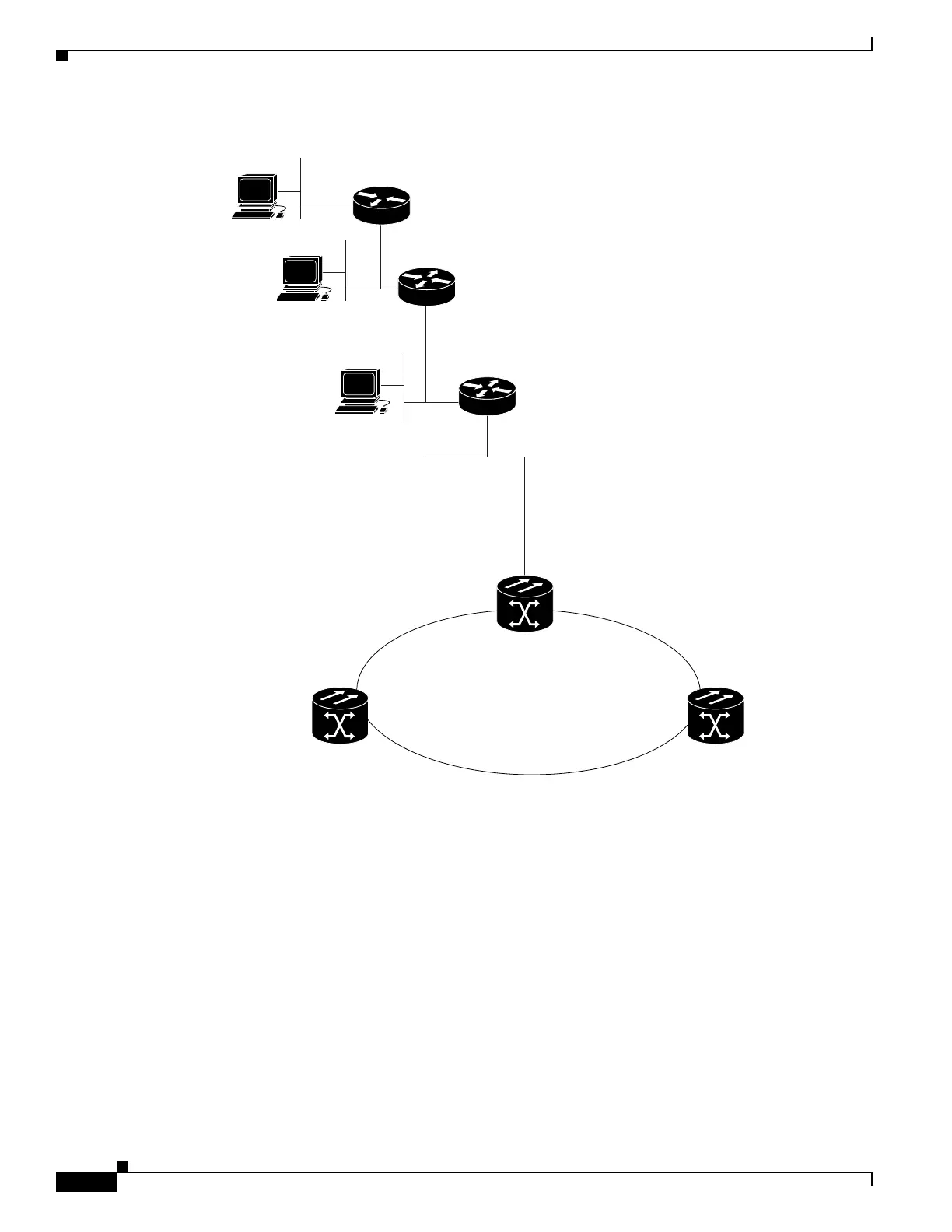15-10
Cisco ONS 15454 DWDM Reference Manual, R8.5
78-18343-02
Chapter 15 Management Network Connectivity
15.2.6 Scenario 6: Using OSPF
Figure 15-7 Scenario 5: Static Route With Multiple LAN Destinations (ANSI and ETSI)
15.2.6 Scenario 6: Using OSPF
Open Shortest Path First (OSPF) is a link state Internet routing protocol. Link state protocols use a “hello
protocol” to monitor their links with adjacent routers and to test the status of their links to their
neighbors. Link state protocols advertise their directly connected networks and their active links. Each
link state router captures the link state “advertisements” and puts them together to create a topology of
the entire network or area. From this database, the router calculates a routing table by constructing a
shortest path tree. Routes are recalculated when topology changes occur.
ONS 15454s use the OSPF protocol in internal ONS 15454 networks for node discovery, circuit routing,
and node management. You can enable OSPF on the ONS 15454s so that the ONS 15454 topology is
sent to OSPF routers on a LAN. Advertising the ONS 15454 network topology to LAN routers
CTC Workstation
IP Address 192.168.1.100
Subnet Mask 255.255.255.0
Default Gateway = 192.168.1.1
Host Routes = N/A
Router #1
IP Address of interface ”A” to LAN “A” 192.168.1.1
IP Address of interface “B” to LAN “B” 192.168.2.1
Subnet Mask 255.255.255.0
ONS 15454 #2
IP Address 192.168.2.20
Subnet Mask 255.255.255.0
Default Router = N/A
Static Routes = N/A
ONS 15454 #1
IP Address 192.168.2.10
Subnet Mask 255.255.255.0
Default Router = 192.168.2.1
ONS 15454 #3
IP Address 192.168.2.30
Subnet Mask 255.255.255.0
Default Router = N/A
Static Routes = N/A
LAN B
LAN A
Int "A"
Int "B"
Ring
124250
Static Routes
Destination 0.0.0.0
Mask 0.0.0.0
Next Hop 192.168.2.1
Cost = 2
LAN C
LAN D
Router #3
Router #2

